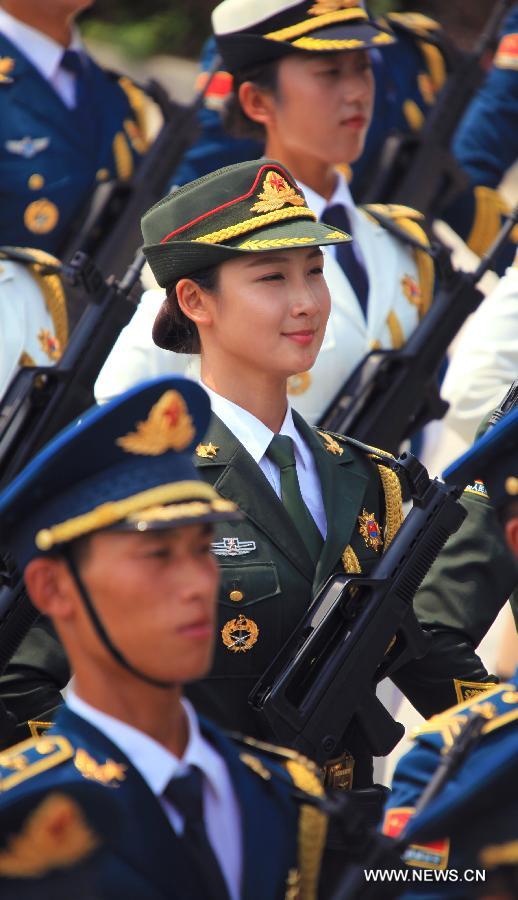A Victory Parade for China and humanity
- By John Ross
 0 Comment(s)
0 Comment(s) Print
Print E-mail China.org.cn, August 31, 2015
E-mail China.org.cn, August 31, 2015
|
|
|
Soldiers take part in a training for a military parade in Beijing, capital of China, Aug. 12, 2015. China will hold a grand military parade on Sept. 3 to mark the 70th anniversary of the victory of the Chinese People's War of Resistance Against Japanese Aggressions and the World Anti-Fascist War. [Xinhua/Zha Chunming] |
China's role in the Asian theatre is, of course, better understood. Japan's strategy was to wage an aggressive war in China and South East Asia and maintain a hardened defensive perimeter in the Pacific strong enough to resist U.S. counter-attacks following Pearl Harbor. However, Japan totally underestimated China's resistance. For four years before Pearl Harbor, China tied down the overwhelming bulk of Japan's army. Japan defeated the Kuomintang (KMT) led forces in the conventional battles for Shanghai, Nanjing and other cities, but its control only extended to major towns and transport routes. Even when Japan's forces advanced, they were isolated and tied down in the great expanse of China, its countryside. With far greater Japanese forces forced to fight in China than the Pacific, Japan's defensive perimeter against the U.S. was hugely weakened.
This resistance also determined events in China. Troops in the KMT led army showed equal heroism to Communist forces. But the quality of the leadership of the two resistance forces against Japan was decisively different. Chiang Kai-shek notoriously declared, "The Japanese are a disease of the skin, the Communists are a disease of the heart." The KMT regime's bankruptcy was dramatically highlighted by Chinese resistance. By June of 1944, U.S. Foreign Service reports concluded that "The Generalissimo is losing the support of a China which, by unity in the face of violent aggression, found a new and unexpected strength." On August 23, 1945, eight days after Japan's surrender, He Yingqin, the KMT army Commander, authorized military operations by Japan's troops remaining in China against the Communists. It was precisely for such reasons of the rottenness of its regime that although in August 1945 the KMT occupied three quarters of China, with military forces six times larger than the Communists, it lost the ensuing Civil War and the People's Republic of China was created in 1949.
This is the final link to the parade on September 3. By 1945, China had suffered under continuous foreign aggression for over a century, the new China created by the Communist victory in 1949 ended this.
In the War of Resistance Against Japanese Aggression more than 30 million Chinese people died. This gigantic sacrifice was not in vain. It is solely due to their efforts that their children and grandchildren see the rebirth of China symbolized in the Victory Parade of a country with the world's most dynamic economy and military forces so strong no country dare attack it. The generation that fought the war against Japanese aggression above all sacrificed for their motherland, but they wrote an immortal page not only for China but for all humanity.
The writer is a columnist with China.org.cn. For more information please visit: http://www.china.org.cn/opinion/johnross.htm
Opinion articles reflect the views of their authors, not necessarily those of China.org.cn.







Go to Forum >>0 Comment(s)